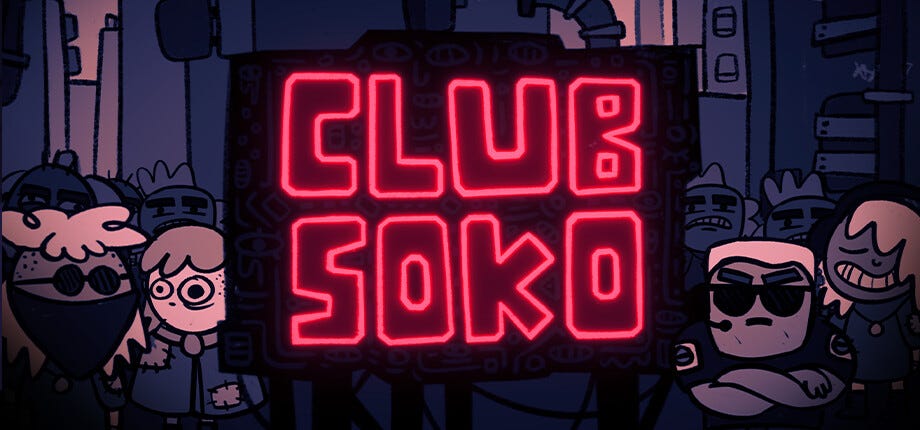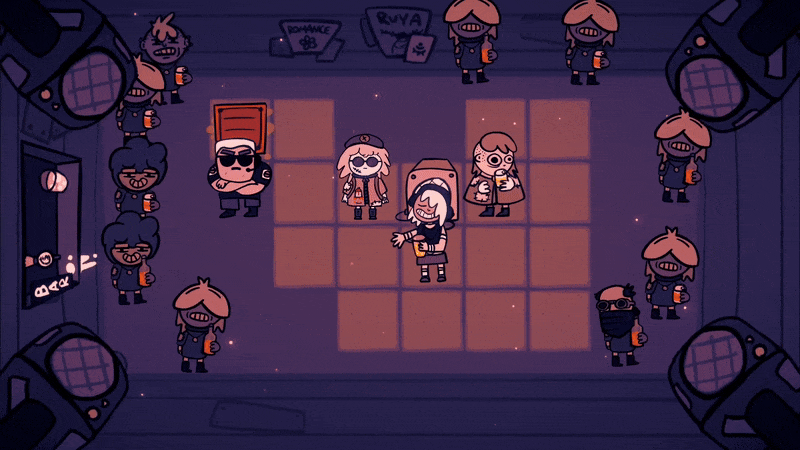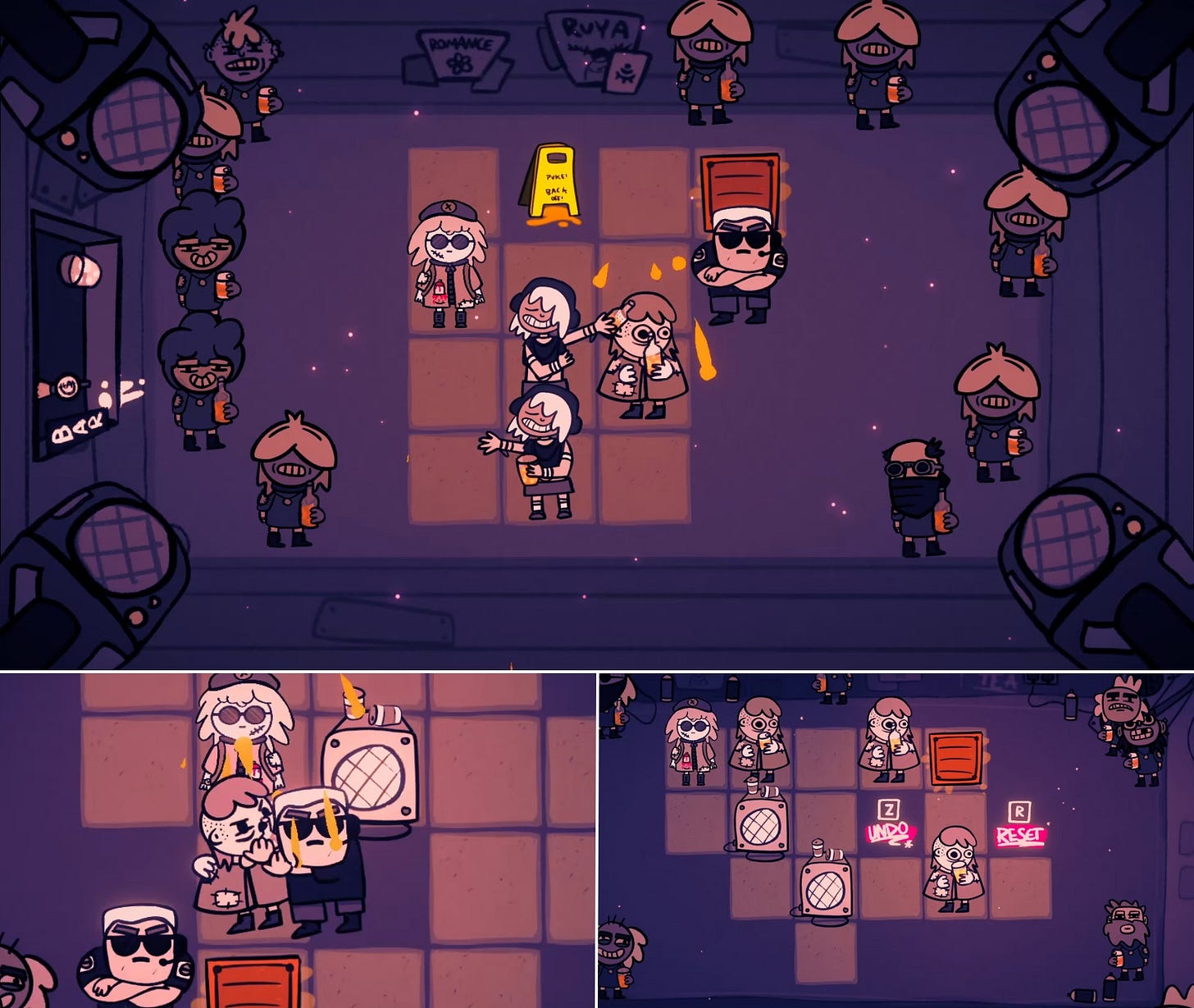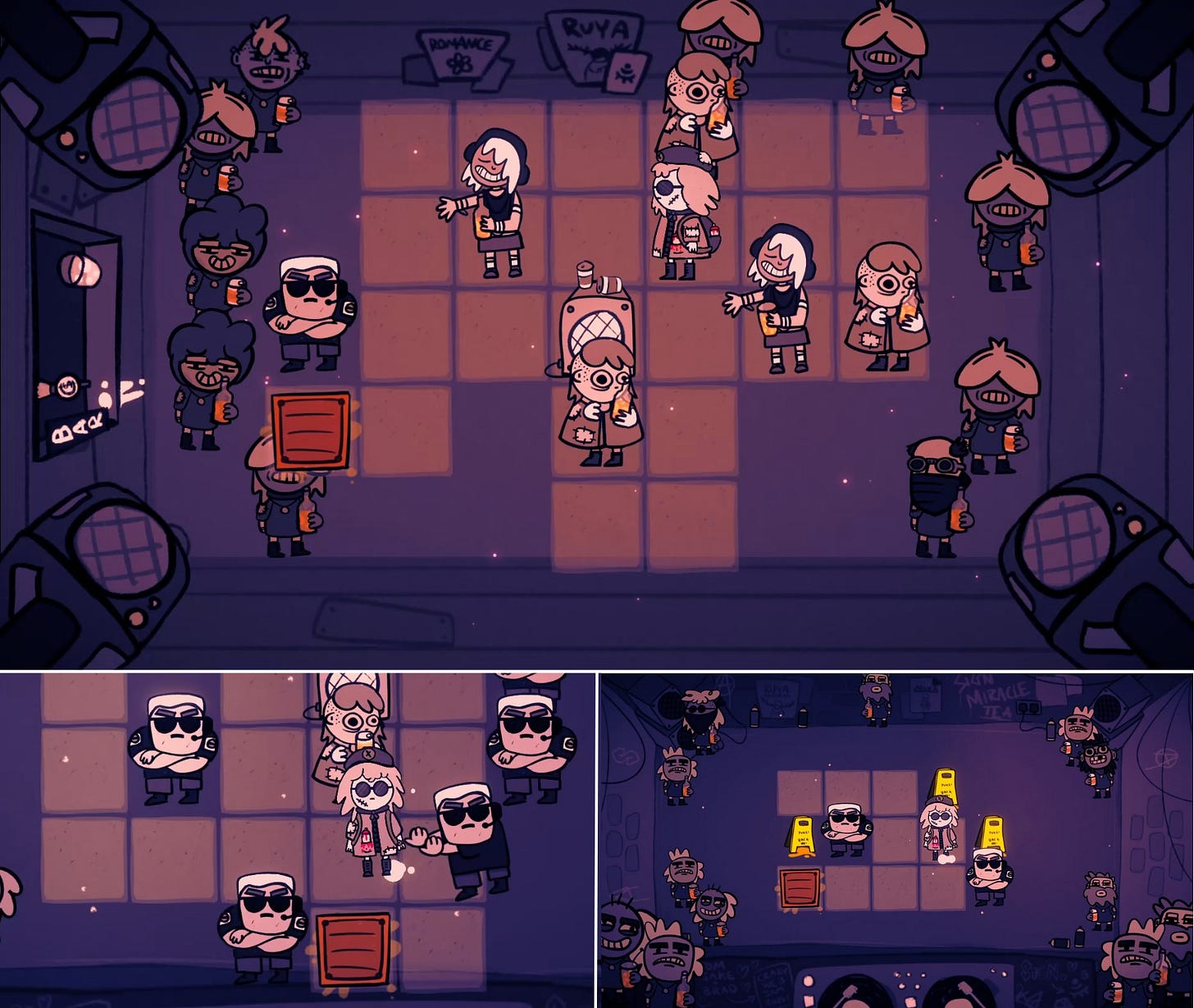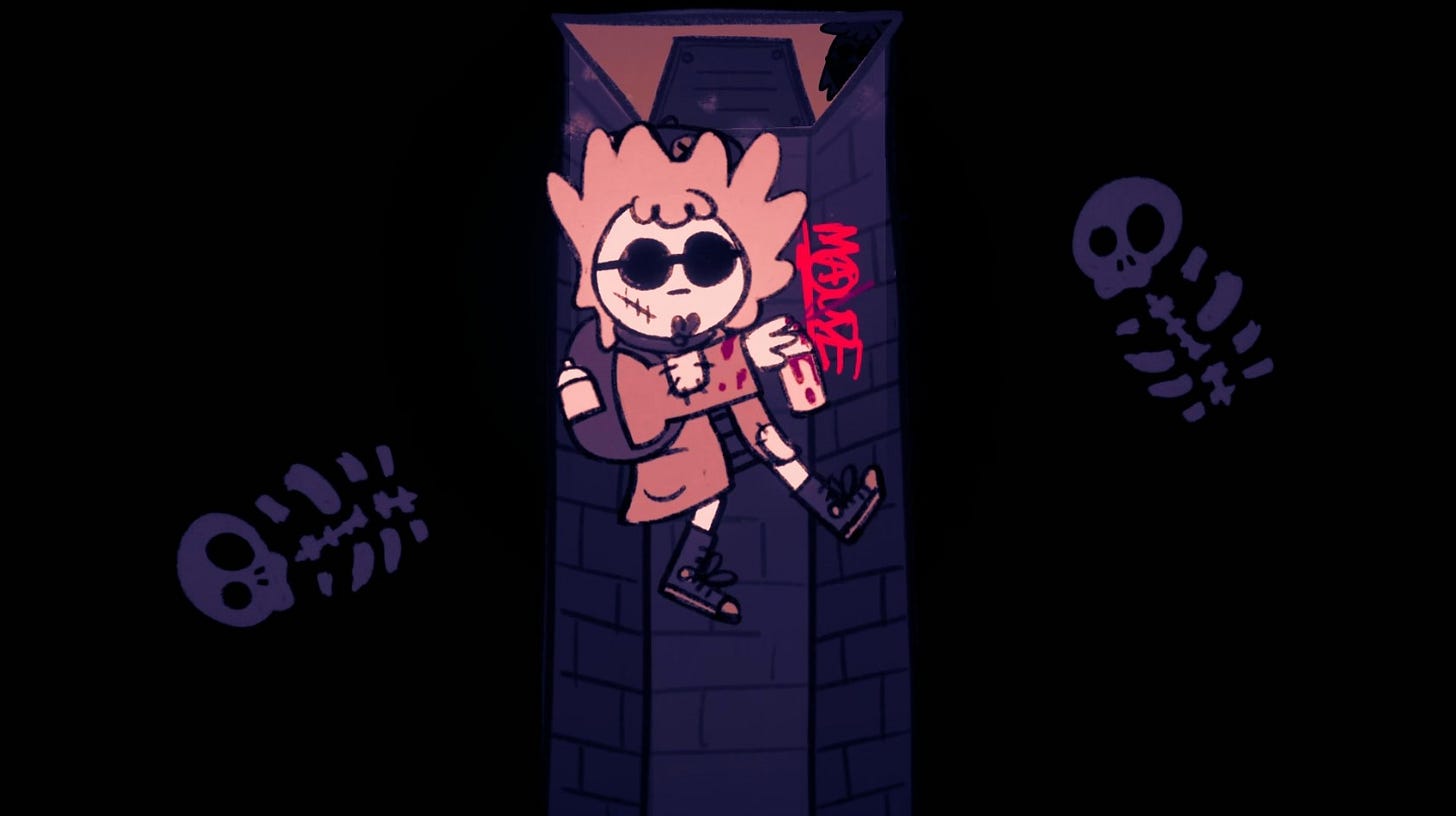‣ Club Soko
From: Miracle Tea
Platforms: PC
Release: To be announced
Genre: Sokoban clubbing
Steam Page • Demo Video • Developer Site
Pedigree sokoban that replaces crates with drunk dancing patrons and grumpy staff.
Sokoban games are almost as old as video games. First released by that name in 1982, Sokoban is Japanese for "warehouse keeper", presented as a puzzle where players push boxes around on a grid, moving the right boxes into the right spots without block routes or creating dead-ends.
It's since become a genre, even recently celebrated by Steam's Box-Pushing festival. Sokoban games have been interpreted in thousands of different styles and ideas. But infiltrating an elite nightclub? That must be a first. Let's hit the dance floor in Club Soko.
Kat is a raver graffiti artist set on spray painting every available space. That includes the hottest and most exclusive spot in town, Club Soko, Getting in is easy, but accessing the deeper parts of the club will require some smart moves.
Every stage has Kat (also called Maude on the Steam page) moving across a dance floor divided into a grid pattern. Her goal is a trapdoor, which she can reach by moving across the grid's blocks. However, it's never that simple. In her way stands drunk patrons, speaker boxes, grumpy bouncers, and other obstacles.
In sokoban-fashion, Kat can push some of these objects and characters onto other squares. Other characters try to foil her. For example, the bouncers will shove her off a square, and the dancing rave girls will automatically move her between squares.
Kat blocks those moves by pushing characters and objects around. Early on, the solutions are very obvious, but they become harder with subsequent levels and as the game adds more characters and obstacles.
Some puzzles are fiendish and, in typical sokoban fashion, they seem impossible until you land upon the solution (then it's so obvious!). Figuring things out requires trial and error, but that's the appeal of this genre. You know the answer is staring you in the face. If you get stuck, you can undo moves or you can restart the stage.
📽 Demo Snapshot: Meet the dancers
The action takes places against a backdrop of stylised art and a thumping soundtrack. Club Soko's art is pleasant—murky and low-key (as one would expect from a hazy nightclub) but also stylised and polished to deliver a distinct visual style. The soundtrack is very catchy, even though the demo only has a single song. The game's marketing says there will be multiple songs that fit different levels, suggesting tha the art will also change as you progress (another hallmark of many sokoban games).
Club Soko's demo is a little thin. As mentioned, there is only one song, the club's decor doesn't change (other than the crowd), and you only encounter a few of the club's characters and obstacles. But there's enough here to decide if you'd tackle the 100+ levels that will be in the full game.
The developer, Miracle Tea, has experience making puzzle games, having produced titles like Ruya, Alula, and the upcoming sequel, Ruya: Ascension. Club Soko is an extension of that experience, sharing the puzzle pedigree and a similar visual style.
But at its heart, Club Soko is a pedigree sokoban game that replaces warehouse crates with drunk dancing patrons and grumpy staff, adding some interesting twists that gives the genre a fresh appeal.
Club Soko hasn’t announced a release date.
Explore The Game with Youtube Chapters:
📽 00:45 The tutorial stages
📽 01:42 Stage 5: Bouncers!
📽 02:35 Stage 9: A little more complicated
📽 05:12 Stage 14: A bit more to think about
📽 06:11 Stage 16: This took a while
📽 13:57 Finally solved it
📽 15:14 Stage 17: Dancers!
📽 16:34 Stage 19: Another tough stage
📽 20:12 Stage 20: The last stage
Thanks for reading Adventures in Indie Gaming! Subscribe to receive new posts.



